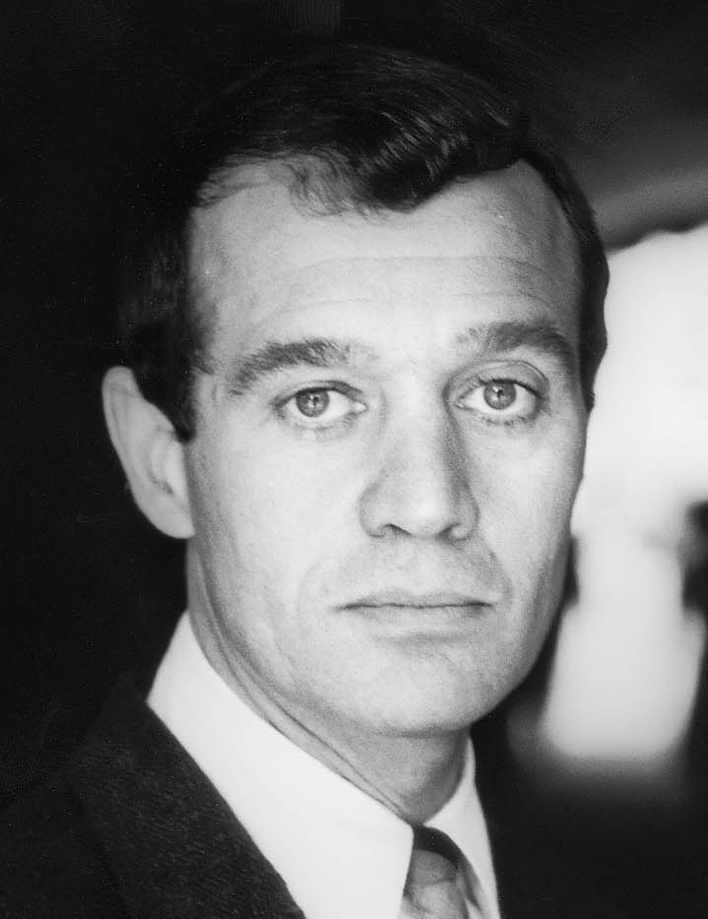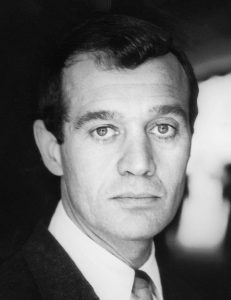
Anatole Paul Broyard (July 16, 1920 – October 11, 1990) was an American writer, literary critic and editor born in New Orleans who wrote for The New York Times. In addition to his many reviews and columns, he published short stories, essays, and two books during his lifetime. His autobiographical works, Intoxicated by My Illness (1992) and Kafka Was the Rage: A Greenwich Village Memoir (1993), were published after his death. He had moved to Brooklyn, New York with his family as a youth.
After his death, Broyard became the center of controversy when it was revealed that he had “passed” as white as an adult, when he wanted simply to be accepted as a writer. Some friends said they always knew he had black ancestry. A Louisiana Creole of mixed race ancestry, Broyard was criticized by some blacks for this, during a period of increased political activity by African Americans. Advocates of multiracial culture have cited Broyard as an example of someone insisting on an independent racial identity before it was widely popular in mainstream America.
Anatole Broyard was born in New Orleans into a mixed-race Louisiana Creole family, the son of Paul Anatole Broyard, a carpenter and construction worker, and his wife, Edna Miller, neither of whom finished elementary school. Broyard was descended from free people of color who had achieved that status before the Civil War. The first Broyard recorded in Louisiana was a French colonist in the mid-eighteenth century. Broyard was the second of three children; he and his sister Lorraine, two years older, were light skinned with features that were more European. Their younger sister Shirley, who eventually married the lawyer and civil rights leader Franklin Williams, was darker and showed more African ancestry.
When Broyard was a child, his family joined the Great Migration during the Great Depression, moving from New Orleans to New York City, to go where his father thought there were more work opportunities. They lived in a working-class and racially diverse community in Brooklyn. Having grown up in the French Quarter’s Creole community, Broyard felt he had little in common with the blacks of Brooklyn. He saw his parents “pass” as white to get work, as his father found the carpenters’ union racially discriminatory. By high school, the younger Broyard had become interested in artistic and cultural life; his sister Shirley said he was unique in the family with these interests.
As the writer and editor Brent Staples wrote in 2003, “Anatole Broyard wanted to be a writer — and not just a ‘Negro writer’ consigned to the back of the literary bus.” The historian Henry Louis Gates, Jr. wrote: “In his terms, he did not want to write about black love, black passion, black suffering, black joy; he wanted to write about love and passion and suffering and joy.”
Broyard had some stories accepted for publication in the 1940s. He began studying at Brooklyn College before the US entered World War II. When he enlisted in the Army, the armed services were segregated and no African Americans were officers. He was accepted as white at enlistment, successfully completed officers’ school, and was promoted to captain during his service.
After the war, Broyard continued with his white identity. Staples noted:
“Those who had escaped the penalties of blackness in the military were often unwilling to go back to second-class citizenship after the war. One demographer estimated that more than 150,000 black people sailed away permanently into whiteness during the 1940’s alone, marrying white spouses and most likely cutting off their black families.”
Broyard used the GI Bill to study at the New School for Social Research in New York. He settled in Greenwich Village, where he became part of its bohemian artistic and literary life. With money saved during the war, Broyard owned a bookstore for a time. As he recounted in a 1979 column:
“Eventually, I ran away to Greenwich Village, where no one had been born of a mother and father, where the people I met had sprung from their own brows, or from the pages of a bad novel…. Orphans of the avant-garde, we outdistanced our history and our humanity.”
Broyard did not identify with or champion black political causes. Because of his artistic ambition, in some circumstances he never acknowledged that he was part black. On the other hand, Margaret Harrell has written that she and other acquaintances were casually told that he was a writer and black before meeting him, and not in the sense of having to keep it secret. That he was part-black was well known in the Greenwich Village literary community from the early 1960’s.
During the 1940’s, Broyard published stories in Modern Writing, Discovery, and New World Writing, three leading pocket-book format “little magazines”. He also contributed articles and essays to Partisan Review, Commentary, Neurotica, and New Directions Publishing. Stories of his were included in two anthologies of fiction widely associated with the Beat writers, but Broyard did not identify with them.
He was often said to be working on a novel, but never published one. After the 1950’s, Broyard taught creative writing at The New School, New York University, and Columbia University, in addition to his regular book reviewing. For nearly fifteen years, Broyard wrote daily book reviews for the New York Times. The editor John Leonard was quoted as saying, “A good book review is an act of seduction, and when he [Broyard] did it there was no one better.”
Broyard first married Aida Sanchez, a light-skinned, multi-racial Puerto Rican, with whom he had a daughter Gala. They divorced after Broyard returned from military service inWorld War II. In 1961, at the age of 40, Broyard married again, to Alexandra (Sandy) Nelson, a modern dancer and younger woman of Norwegian-American ancestry. He was indirect about his family, but she learned about him. They had two children, Todd, born in 1964, and a daughter Bliss, born in 1966. The Broyards raised their children as white in suburban Connecticut. When they had grown to young adults, Sandy urged Broyard to tell them about his family (and theirs), but he never did.
In the late 1970’s, Broyard started publishing brief personal essays in the Times, which many people considered among his best work.[3] These were collected in Men, Women and Anti-Climaxes, published in 1980. In 1984 Broyard was given a column in the Book Review, for which he also worked as an editor. He was among those considered “gatekeepers” in the New York literary world, whose positive opinions were critical to success.
Shortly before he died, Broyard wrote a statement which some people later took to represent his views. In explaining why he so missed his friend the writer Milton Klonsky, with whom he used to talk every day, he said that after Milton died, “No one talked to me as an equal.” Although critics framed the issue of Broyard’s identity as one of race, Broyard wanted equality and acceptance: he wanted neither to be talked down to nor to be looked up to, as he believed either masked the true human being.
Sandy told their children of their father’s secret before his death. Broyard died of prostate cancer, diagnosed in 1989. His first wife and child were not mentioned in his New York Times obituary.
In 1996, six years after Broyard’s death, Henry Louis Gates criticized Broyard for concealing his African-American ancestry in a profile entitled “White Like Me” in The New Yorker. He expanded on this in “The Passing of Anatole Broyard”, an essay published the next year in his Thirteen Ways of Looking at a Black Man (1997). Gates felt that Broyard had deceived friends and family by “passing” as white, but also understood his literary ambition. He wrote,
“When those of mixed ancestry—and the majority of blacks are of mixed ancestry— disappear into the white majority, they are traditionally accused of running from their “blackness.” Yet why isn’t the alternative a matter of running to their “whiteness”?”
In 2007, Broyard’s daughter Bliss published a memoir, One Drop: My Father’s Hidden Life: A Story of Race and Family Secrets. It expressed her psychological and physical journeys of exploring her father’s family in New York, New Orleans and the West Coast, and their meaning for her own identity and life.

